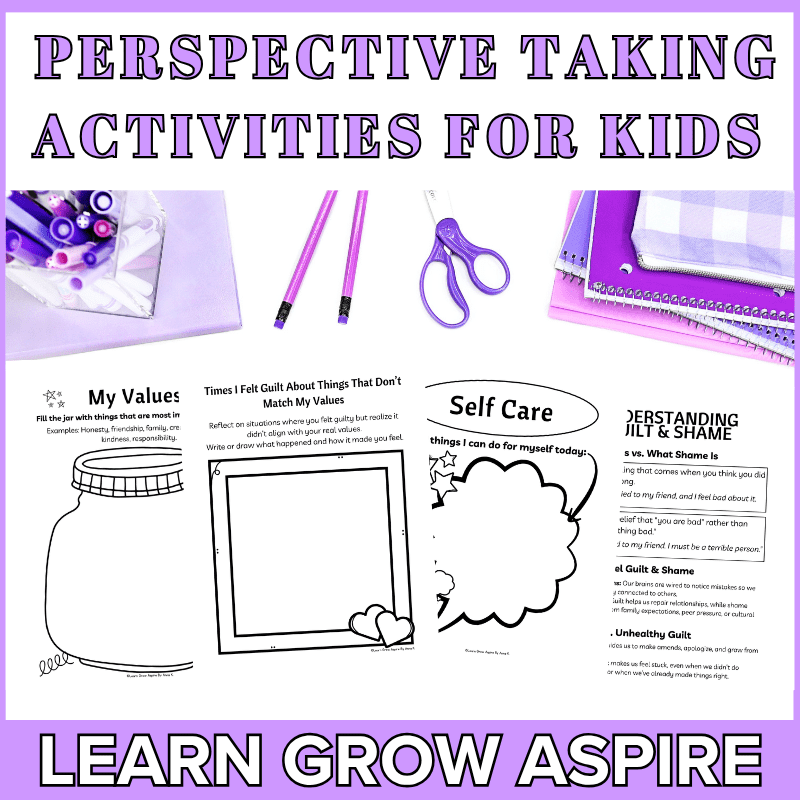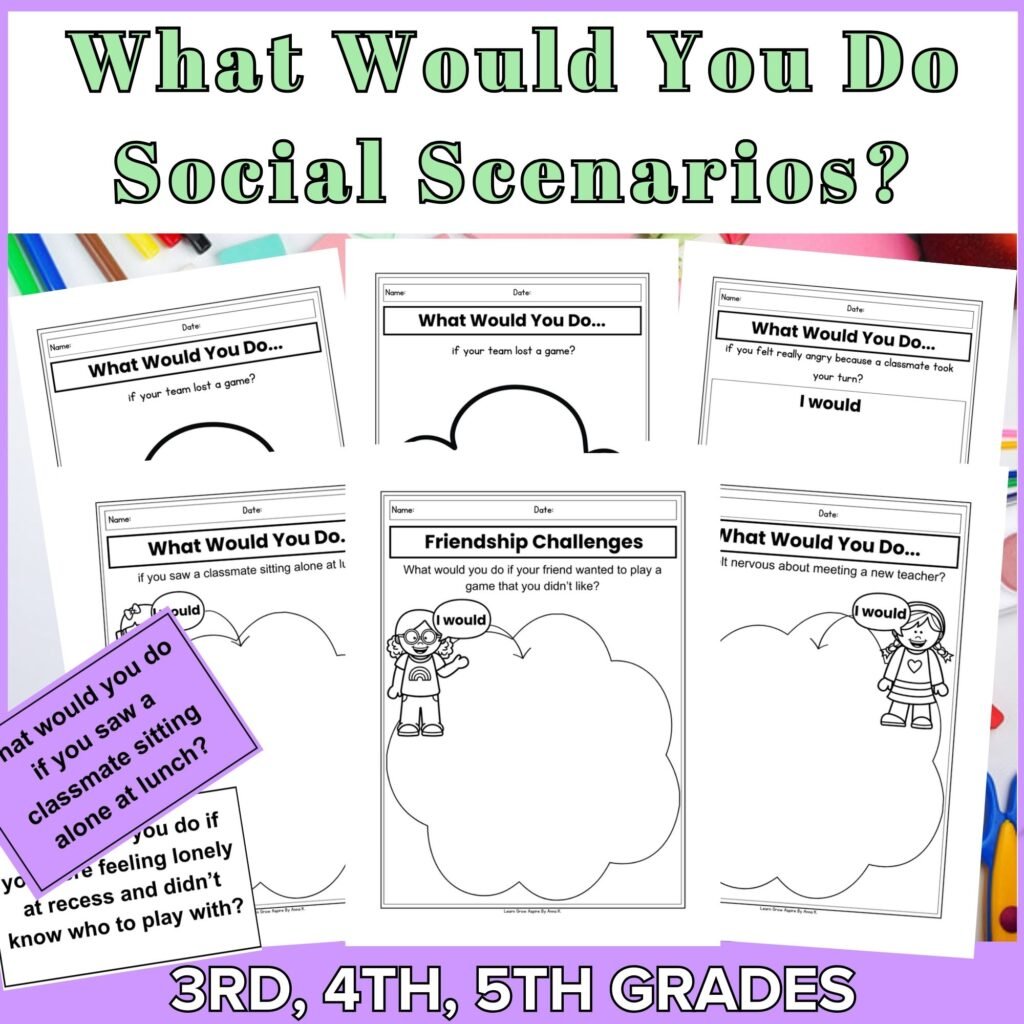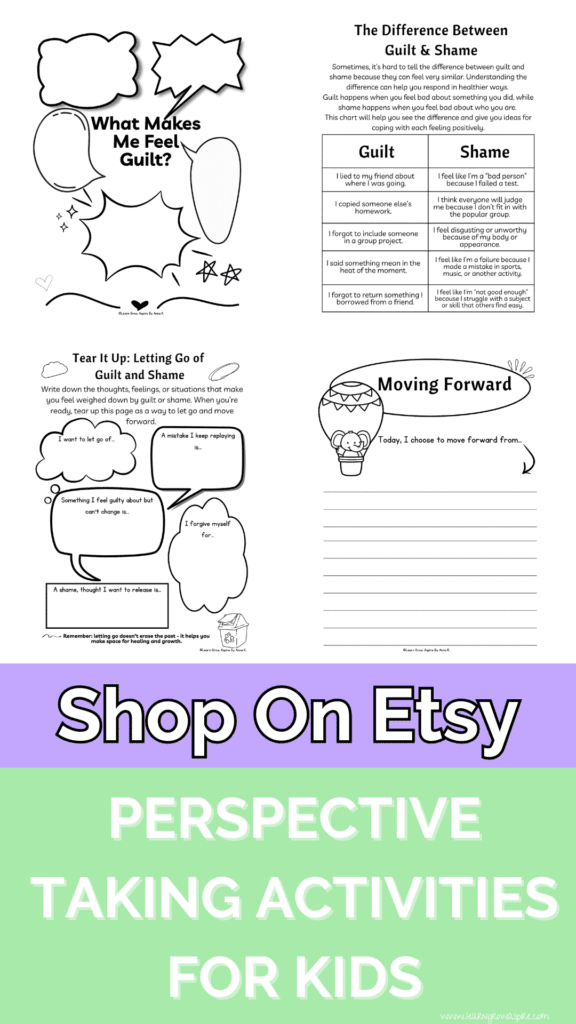Discover fun perspective taking activities for kids.

Teaching kids about perspective is one of the best gifts we can give them.
When children understand that other people may see things differently, they grow more patient, kind, and empathetic.
But how do we teach such a big idea in a way that makes sense to kids?
The answer is simple. We use stories, games, and activities that are fun, practical, and easy to follow.
In this post, I’ll share fun ways to teach perspective, why it matters, and how you can make it part of your child’s daily life.
I’ll also introduce a resource I created that makes teaching perspective simple and engaging.
Why Teaching Perspective Matters?
First, let’s talk about why perspective-taking is so important.
I’m sure you would agree that kids don’t always realize that other people think, feel, and believe differently from they do.
For example, many times, my nine-year-old son assumes his 12-year-old sister likes the same game he does. Sounds familiar?
Or maybe your child feels frustrated when someone doesn’t react the same way they expected.
However, when kids learn to see the world through another person’s eyes, everything changes.
They begin to:
-
Build stronger friendships.
-
Communicate more clearly.
-
Handle disagreements with kindness.
-
Develop empathy and compassion.
In short, perspective helps children grow into respectful, caring individuals.
Make Perspective Fun with Everyday Moments
Now, how do we actually teach perspective?
The good news is that you don’t need complicated lessons. You can use everyday situations to encourage conversations.
For instance:
-
When watching a show, pause and ask, “How do you think that character feels right now?”
-
During a disagreement between siblings, you could ask each child, “What do you think your brother/sister is feeling?”
-
While reading a book, ask, “Why do you think she made that choice?”
By asking your child these simple yet powerful questions, you will help your child to step outside of themselves and consider another point of view.
And the more often you ask, the easier it becomes for them to practice.
Use Stories to Teach Perspective
Stories are powerful!!!
They allow kids to step into someone else’s shoes without even realizing it. Choose books with strong characters and different viewpoints. After reading, discuss questions like:
-
“Do you agree with what the character did?”
-
“How would you feel if that happened to you?”
-
“Why do you think they made that choice?”
The conversation doesn’t need to be long. Even short reflections can help children build awareness. And over time, those small reflections add up.
Try Simple Role-Play Games

Role-play is another great way to teach perspective.
Think of it. Kids love pretending, and pretending helps them see things in new ways. Right!?
Try these ideas:
-
Act out a playground scenario where one child feels left out. Ask how both kids might feel.
-
Pretend to be a teacher giving directions. Ask what the students might think if they don’t understand.
-
Play a game where one person describes an object from their view while the other guesses what it is.
These quick activities will make the lesson come alive. And they’re fun too!
Alternatively, you can grab these – “What would you do in social scenarios worksheets”?
Encourage Perspective Through Art
Art is also a wonderful tool for teaching perspective.
Here are some fun ideas:
-
Ask your kids to draw the same object from two different angles.
-
Let them illustrate how they feel versus how someone else in the story might feel.
-
Have them create two sides of the same event in comic strip form.
Art makes abstract ideas concrete, and kids can see the differences with their own eyes.
Bring Perspective into Group Work
If you’re a teacher, group work is the perfect time to highlight perspective.
Encourage your students to listen to each other’s ideas and notice how opinions can differ. Afterward, ask them to share what they learned from a classmate.
This not only teaches perspective but also strengthens collaboration.
Make It a Daily Habit
Above all, perspective should not be a one-time lesson. It’s a habit!
That means we can practice it in small ways each day.
-
At dinner, ask, “What was the best part of your day? Now, what do you think was the best part of your friend’s day?”
-
During conflicts, guide kids to see both sides.
-
When something surprising happens, talk about how people may react differently.
These everyday habits build perspective naturally.
Use Structured Resources For Extra Support

While everyday conversations are powerful, sometimes kids need more structure. That’s why I created a set of Perspective Worksheets and Activities for kids.
These printables are designed to help children actively practice seeing things from another person’s point of view.
Inside this resource, you’ll find:
-
Fun worksheets that encourage kids to reflect on different scenarios.
-
Activities that make them think about how others feel.
-
Writing prompts to help them imagine new perspectives.
-
Creative exercises that make learning interactive.
They’re perfect for parents, teachers, or counselors who want to make perspective-taking simple and enjoyable.
👉 You can grab the Perspective Worksheets and Activities in my Etsy shop here: Perspective Taking Worksheets For Kids.
This resource will save you time, keep your kids engaged, and provide everything you need in one place.

Add a Challenge for Extra Fun
Another way to make perspective exciting is by creating a challenge.
For example, try a 7-Day Perspective Challenge:
-
Day 1: Ask someone how they feel and listen without interrupting.
-
Day 2: Imagine what it would be like to switch places with a sibling or classmate.
-
Day 3: Watch a show and talk about what the main character might be thinking.
-
Day 4: Draw how two people might see the same problem differently.
-
Day 5: Play a game and focus on how the other person feels when they win or lose.
-
Day 6: Tell a story from another person’s point of view.
-
Day 7: Share one thing you learned about seeing through another’s eyes.
Challenges like this keep the learning fun and memorable.
Perspective Taking Activities For Kids
Teaching perspective doesn’t have to be complicated. With stories, games, art, and daily conversations, kids can learn to see the world through another person’s eyes.
And when they do, they grow more empathetic, respectful, and understanding.
If you’re looking for an easy way to make this lesson stick, don’t forget to check out my Perspective Worksheets and Activities on Etsy. They’re ready to print, fun for kids, and designed to guide them step by step in practicing perspective.
👉 Grab them here: Perspective Worksheets and Activities.
By combining fun activities with structured practice, you’ll give your kids the tools they need to understand and respect others.
And that’s a skill that will help them for life.
More Fun SEL Activities For Kids
Here are some more fun SEL and mindfulness activities to grow strong, confident, and resilient kids.
- Social-emotional learning activities for kids
- Friendship lessons for elementary students
- Activities to foster a growth mindset
Pin These Perspective Taking Activities For Kids
Save these fun ways to teach your kids perspective taking so that you can easily access them when needed. And while on Pinterest, please consider following me on the platform. I would absolutely appreciate it.

Some of the links in this post may be affiliate links. I’m also an Amazon Affiliate and will occasionally link to some of my favorite Amazon products. I will receive a small percentage back if you purchase through my link. You won’t be charged a penny more if you shop through my links. That said, I do NOT recommend anything I do not use and love! Thank you for helping support my blog!
